ii SIPP
Stakeholder pension vs Self-Invested Personal Pension (SIPP)
A pension is a great way to save for your retirement, especially as tax relief can boost your contributions. But, with several types of pension available, understanding their differences will help you pick one that is right for you.
Here, we look at how stakeholder pensions and SIPPs compare.

Page contents:
- What is a stakeholder pension?
- What is a SIPP?
- Stakeholder pensions vs SIPPs - the similarities and the differences
- Are stakeholder pensions better value than SIPPs?
- Should I have a stakeholder pension or a SIPP?
- Can I transfer a stakeholder pension into a SIPP, or vice versa?
- Can I get help to decide between a stakeholder pension and a SIPP?
What is a stakeholder pension?
Stakeholder pensions were introduced in 2001 to provide a simple and transparent way to save for retirement. You can take out a stakeholder pension yourself or you may be offered one by an employer.
To be called a stakeholder pension, they must meet minimum standards set by the government:
• Charges – maximum of 1.5% a year of the value of your pension pot in the first 10 years, then 1% a year. Where an employer offers a stakeholder pension for automatic enrolment, the automatic enrolment fee cap of 0.75% applies. There are also no transfer charges on stakeholder pensions if you move to another provider. Although these charges were ground-breaking when stakeholders were introduced, charges have fallen significantly over the last 20 years across all pensions and many now fall below the maximum levels set for stakeholders. Similarly, while transfer charges were commonplace 20 years ago, the vast majority of pensions do not have transfer charges.
• Contributions – minimum contribution of no more than £20 plus you must be able to stop or restart contributions whenever you like, without any penalty.
• Investments – a default investment fund, usually with a lifestyling option to switch your money into lower risk investments as you approach retirement must be available.
Stakeholder pensions are a defined contribution / money purchase pension. This means the amount you receive is based on how much you pay in and the growth of the underlying investments.
As well as the default investment fund, you can invest your stakeholder pension across a range of funds. These will usually be the pension provider’s funds but some stakeholders offer funds from other companies, too.
Any contributions you make to your stakeholder pension are topped up with tax relief, subject to the annual allowance. Once you reach age 55 (57 from 2028) you can access your pension, taking up to 25% of it tax-free (subject to a maximum of £268,275).
What is a SIPP?
A SIPP is another form of defined contribution pension. Like a stakeholder, contributions are topped up with tax-relief and your money is locked away from you reach age 55 (57 from 2028).
But, where a stakeholder pension allows you to invest across a range of funds, you have much more investment choice and flexibility with a SIPP.
Although you can stick with a simple investment strategy, a SIPP lets you invest in a wide range of investments including funds, shares, gilts and, in some cases, even commercial property. You can make it as simple or as complex as you like.
There are also no government rules around minimum contributions or maximum charges on SIPPs.
This investment flexibility and freedom does mean that SIPPs are more suited to people who are experienced investors or interested in picking their own pension investments.
Stakeholder pensions vs SIPPs - the similarities and the differences
Stakeholder pension | SIPP |
Defined contribution scheme so the value of your pension depends on how much you pay in and the growth of the underlying investments. | |
Tax relief on contributions up to the annual allowance, which is the lower of £60,000 or 100% of your earnings. | |
Up to 25% can be taken tax-free when you reach 55 (57 from 2028), subject to a maximum of £268,275. | |
You choose from a range of funds offered by your pension provider. | You are free to select from a wide range of investments including funds, shares, gilts and, if your provider offers it, even commercial property. |
Are stakeholder pensions better value than SIPPs?
That depends. When the government introduced stakeholder pensions in 2001, the charge cap (1.5% dropping to 1% after 10 years) made them a much cheaper option than the average pension that was around then.
However, over the last 20 years, charges have fallen across the market, including on SIPPs. This means it is now possible to find SIPPs with lower charges than stakeholders. Do check charges when selecting your pension though, as they can vary significantly between providers.
How much it costs to have a SIPP will also depend how you intend to manage it. If you want to be an active investor or include a non-standard investment such as commercial property, you will pay more than if you took out a stakeholder pension and selected a handful of funds.
Value is not all about charges though. If you are interested in investing and would like to actively manage your pension, the limited fund range available on a stakeholder is likely to disappoint. Conversely, paying a little more for the investment choice and flexibility offered by a SIPP may represent good value.
Should I have a stakeholder pension or a SIPP?
The decision will come down to personal preferences but we find that SIPPS are more suited to investors who are interested or experienced in selecting their own investments.
A stakeholder pension can be a good option if you are starting out on your investment journey or you want to keep your investment decisions to a minimum.
Can I transfer a stakeholder pension into a SIPP, or vice versa?
Yes, there’s nothing to stop you transferring a stakeholder pension into a SIPP if you want the additional investment choice and flexibility. Similarly, if you decide a SIPP is not right for you, you can transfer it into a stakeholder pension.
It is easy to transfer. Simply contact your new pension provider and they will arrange the transfer on your behalf.
Can I get help to decide between a stakeholder pension and a SIPP?
Having the right pension can make a big difference to your experience when saving for retirement. If you are unsure which type of pension is right for you, we recommend seeking professional financial advice. An independent financial adviser will be able to assess your circumstances and recommend the most appropriate pension for you.
How can Pension Wise help?
If you have a defined contribution pension scheme and are 50 or over, then you can access free, impartial guidance on your pension options by booking a face to face or telephone appointment with Pension Wise, a service from MoneyHelper.
If you are under 50, you can still access free, impartial help and information about your pensions from MoneyHelper.

Learn more about our SIPP
Learn how to make the most out of your SIPP with our useful guides.
Important information: The ii SIPP is for people who want to make their own decisions when investing for retirement. As investment values can go down as well as up, you may end up with a retirement fund that’s worth less than what you invested. Usually, you won’t be able to withdraw your money until age 55 (57 from 2028). Before transferring your pension, check if you’ll be charged any exit fees and make sure you don't lose any valuable benefits such as guaranteed annuity rates, lower protected pension age or matching employer contributions. If you’re unsure about opening a SIPP or transferring your pension(s), please speak to an authorised financial adviser.